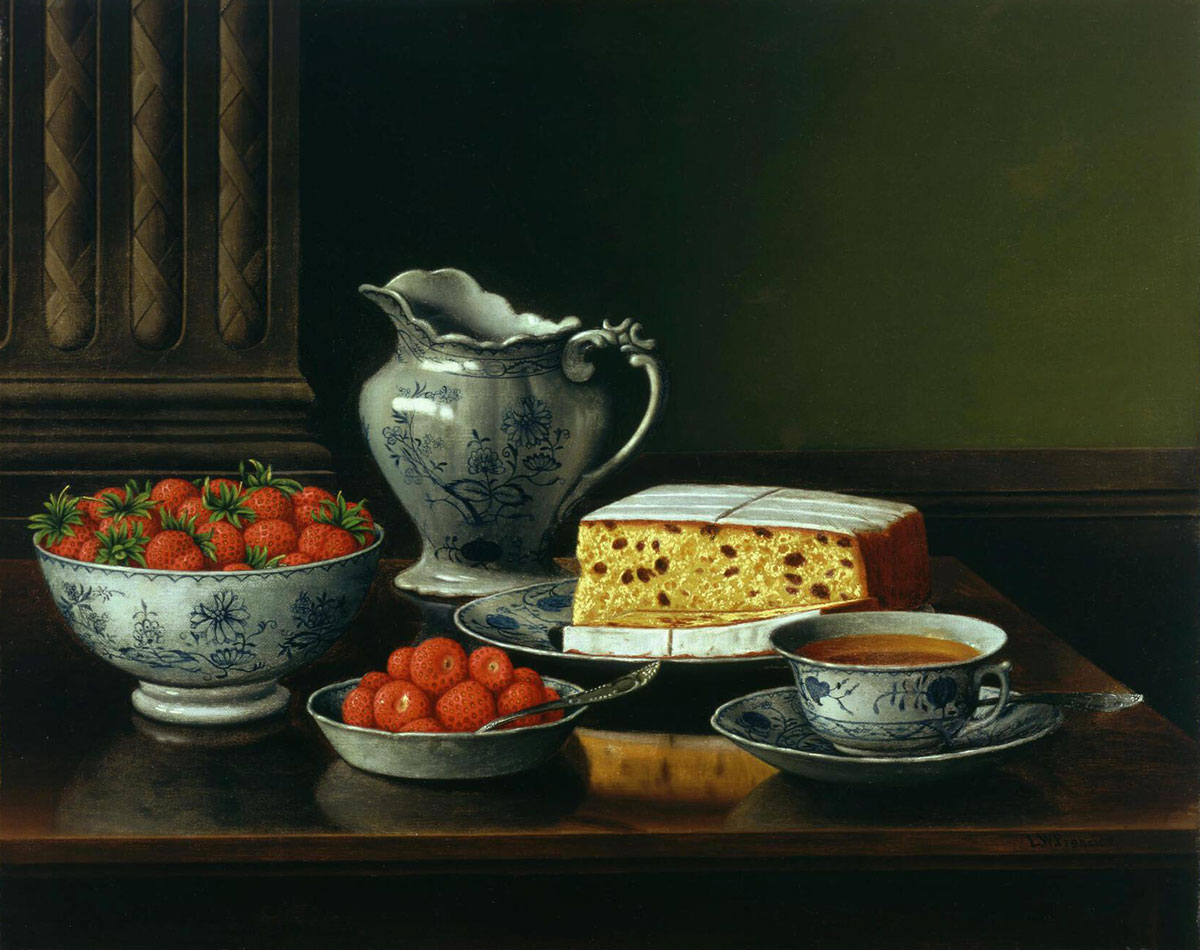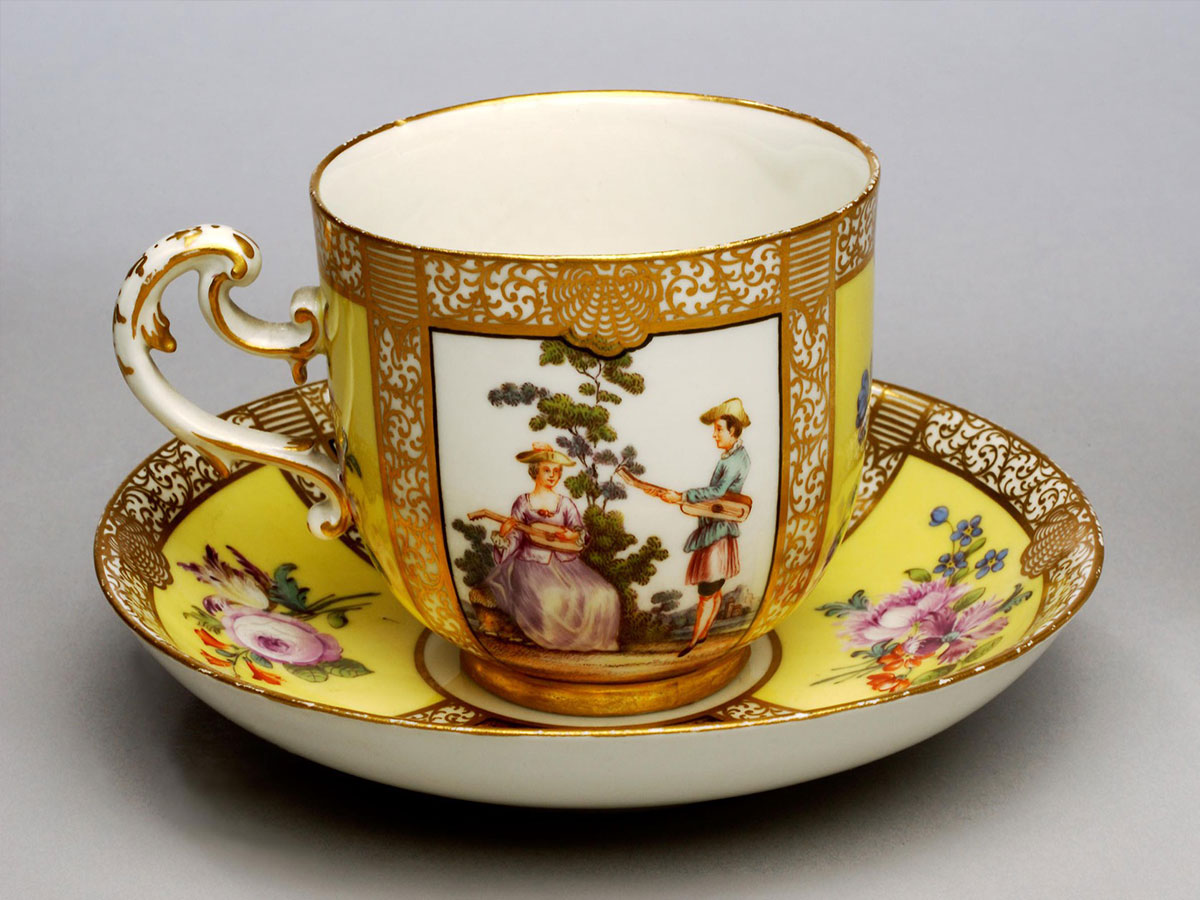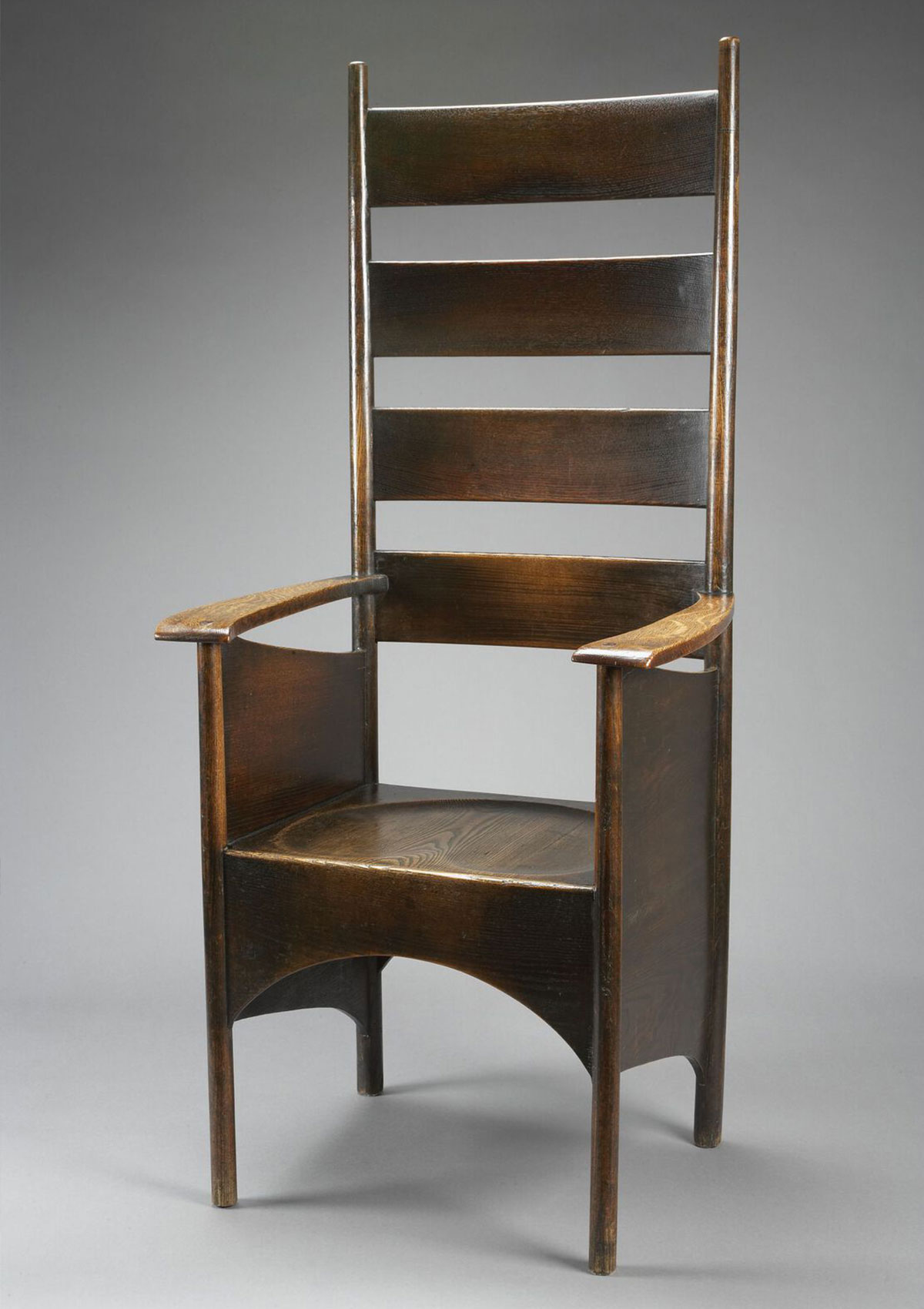Hello, art lovers! Are you a tea lover, too? Tea revives and comforts us; it’s a big business in the modern world. It also has a long history, as told by many objects in our collection.
Whether you prefer green, Earl Grey, or chai, this week’s Tour Tuesday is all about tea. Brew a cup of your favorite, sit back, and enjoy!

Our first work on this tour is Still Life with Strawberries by Levi W. Prentice. The quiet beauty of this table offers the simple pleasure of a piece cake and succulent strawberries paired with a cup of tea.
Prentice was inspired by the wild strawberries that cover the hills of New York’s Adirondack region. In the spring, white blossoms take the place of melting snow and fragrant berries quickly follow suit. Have any of you planted berries in your victory garden?

The next work in our tea-related tour is this contemporary wooden sculpture of a teapot by Jacques Vesery. Vesery lives in a small coastal town in Maine. His work is fluid and organic, using repetitive patterns carved in wood—in this case, tea leaves! Vesery’s tiny teapot isn’t meant to be used; it’s simply a beautiful and delicate homage to tea.
Everything we do takes time, and the time it takes is time required to make what you like.

Next, let’s look at a porcelain teacup and saucer made by the famous German factory Meissen.
During the 1600s and 1700s, wealthy Europeans were as infatuated with imported Chinese porcelain teacups as they were with tea itself. Until 1710, no European manufacturers had successfully produced their own porcelain. Meissen, the maker of this cup, was the first European company to do so.

In this color woodblock print by Suzuki Harunobu, three figures gather in a tearoom. The woman kneeling closest to the cauldron of boiling water appears tranquil, even as the child pesters her.
This print is part of a series where Harunobu focuses on intimate scenes set in domestic interiors. With this scene, the daily ritual making of tea is presented within the playful context of a family at home.

We’ll wrap up this tour with this chair, which comes from a famous Scottish tearoom, a kind of gathering place that grew in popularity the Industrial Revolution.
In the late 1800s, deplorable working conditions in Glasgow factories contributed to alcohol abuse and other ailments. In response, the temperance movement offered alternatives to pubs. Kate Cranston, a Glasgow businesswoman, opened four tearooms with furniture and interiors designed by Charles Rennie Mackintosh. This chair was designed for the men’s smoking and billiards room.